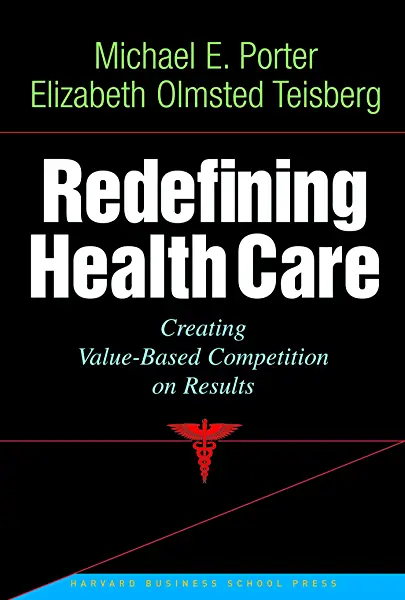

By RICHARD HOEN, MD
Experts claim we could have been better prepared when the COVID-19 pandemic struck in early 2020. With an annual budget of $400-700 million, the Strategic National Stockpile (SNS) is designed to respond to chemical, biological, and other disasters. Its $8 billion inventory included 13,000 ventilators and a limited supply of personal protective equipment, N95 masks, and medical supplies. This left state and local governments scrambling as the COVID-19 pandemic accelerated and the capacity of many hospitals was overwhelmed.
Faced with immediate and visible death and suffering, leaders took drastic steps to contain the virus, “flatten the curve,” and mitigate economic consequences. Trillions of dollars were allocated to recovery and stimulus packages.
This scenario mirrors our general approach to health care: chronic underfunding of public health followed by high costs and loss of life.
While not as shocking as a sudden pandemic, millions of Americans struggle daily with medical and socioeconomic challenges. Our health care system is designed to care for these patients when they have a problem, not to keep them well. This creates a dichotomy where a minority of the population spends most of the health care dollars and little is invested in the remaining majority
National spending on health care was $3.6 trillion in 2018, or $11,000 per person. Half of spending goes to 5% of people, at $53,000 each; the costliest 1% averaged $116,000. This leaves just $300 per person for the other half of Americans. Millions spend nothing.
How much should we spend? Historically, $50,000 per quality-adjusted life-year (QALY) has been the accepted threshold, but this number is higher today. We cannot assign a cost per patient, but understanding costs is important. This highlights the aspects of health care that we currently value – and others we should perhaps value more.
What we pay for
Surgical hospital stays cost $18,500 in 2014 (versus $7,900 for non-surgical admissions), totaling $187 billion. Many common surgeries are generally accepted as necessary, such as cesarean sections, cardiac procedures, cancer resections, and fracture repairs. However, controversies exist around procedures with more nuanced indications.
Back pain affects 80% of Americans and is associated with obesity, depression, and inactivity. Costs are estimated at $100 billion per year, mostly due to lost wages and productivity. The most common surgical treatment is spinal fusion surgery, which costs $12 billion per year, or $29,000 per person. For patients who meet specific criteria, surgery offers hope of improving their symptoms.
The Spine Patient Outcomes Research Trial (SPORT) compared surgery and other nonoperative treatments among highly-selected patients. Surgery cost $34,000-$69,000 per QALY, depending on the procedure, and led to long-term symptom improvement. Successful outcomes were less likely in patients with obesity, diabetes, and other comorbidities.
However, many fusion procedures may be unindicated. A spine multidisciplinary conference reported that 58% of patients offered spinal fusion may be better managed nonoperatively. In fact, when orthopedic surgeons at a 2009 conference were asked what they would choose for themselves, 61% said nonoperative treatment, 38% said no treatment, and only 1% was willing to undergo surgery.
Our fee-for-service system creates a conflict of interest. Spine surgery is five times more common in the United States than other developed countries, and directly related to the supply of spine surgeons. Over a 10 year period, while rates of back pain were unchanged, there was a twofold increase in opioid prescriptions and a fourfold increase in MRIs, epidural steroid injections, and lumbar spinal fusions. Providers are incentivized to deliver treatments aimed at diagnoses, beyond back pain.
Another example of high cost care is chronic kidney disease. Medical and lifestyle interventions can slow disease progression, but many patients eventually reach end stage renal disease (ESRD) and become dependent on hemodialysis. In 2018, Medicare spent $12.7 billion on outpatient dialysis services for nearly 400,000 ESRD patients, or $32,000 per patient.
The lifetime costs of hemodialysis are such that payors have determined kidney transplantation is relatively cost-effective. While long-term hemodialysis costs $72,000 per QALY gained, transplantation costs $40,000-$80,000. ESRD and other chronic medical conditions make up the majority of health care spending.
Another factor that drives health care costs is end-of-life spending. Nearly one-third of Medicare spending is on the last year of life, estimated at $40,000-$50,000 (compared to $7,000 for other years). This is often due to unexpected declines in health that require high-intensity care meant to be lifesaving. But not always. Many patients with terminal conditions receive similar interventions in their final months with less consideration of the expected benefit.
End-stage or end-of-life care is expensive, and the outcomes are often foregone. Earlier investments can have greater impact with lower cost.
What we should value more
It has been said that a person’s life expectancy is more accurately predicted by their zip code than their genetic code. Decades of research have shown that up to 80% of health outcomes are due to non-medical characteristics such as income, education, employment, and housing. These are the social determinants of health, and insurers are beginning to recognize their importance.
The North Carolina Department of Health and Human Services is investigating new ways to buy health, rather than health care. The state’s Medicaid program will invest $650 million over five years in the Healthy Opportunities Pilot program, testing the use of health care dollars to pay for social interventions. Investments will focus on four important social domains: food, housing, transportation, and interpersonal violence/toxic stress.
In preparation, the Department spent a year developing a comprehensive fee schedule. Housing investments are the most expensive, such as $1,300 for moving support or $10,000 for safety/accessibility modifications. Most fees are considerably lower. Domestic violence intervention, monthly medical transportation, and weekly meal assistance all cost less than $200. This fee schedule is a valuable starting point for insurers interested in launching similar programs.
But there are barriers to investing in social determinants of health. North Carolina created their fee schedule to accommodate a special waiver from the federal government that allowed reimbursement for non-medical interventions. This infrastructure is unique and not available in most of the country. Without new policies, it never will be.
Some private organizations are taking similar steps to improve care and reduce costs for various high-risk populations. Commonwealth Care Alliance, a community-based health care organization in Massachusetts, has special programs for elderly and disabled patients. These programs increased utilization of outpatient services and reduced hospitalizations by half. Average monthly savings per patient were $1,600.
HealthCare Partners in California created its Comprehensive Care Centers to manage its high-risk patients. Physicians are salaried and may earn bonuses for meeting quality goals. Hospitalizations have decreased and the program has saved $2 million per year for every 1,000 members.
“You are what you do,” said Carl Jung, “not what you say you’ll do.” Similarly, what we pay for defines what we value. We spend thousands of dollars per patient on high-intensity, episodic health care, while failing to invest in programs that improve health. We spend more money and have worse health than most developed nations.
Payers and policy makers must create universal billing and reimbursement structures that support comprehensive care, social determinants of health, and other proactive programs. We must also reconsider how we incentivize costly and less beneficial interventions.
A growing segment of our population will face economic challenges due to the deepest recession since World War II. These Americans will fall behind. Their health will suffer, and their delayed care will be expensive.
By taking a pragmatic approach and re-aligning incentives it is possible to both improve health and save money. While the public debate is often consumed with the cacophony of “Medicare for All” and “Repeal and Replace,” our reality is somewhere in the middle. The conversation must shift to identifying values we share and applying evidence-based solutions. The COVID-19 pandemic is amplifying the flaws in our health care system; going forward, we should find ways to be better prepared.
Richard Hoehn is a surgical oncology fellow at the University of Pittsburgh Medical Center.
